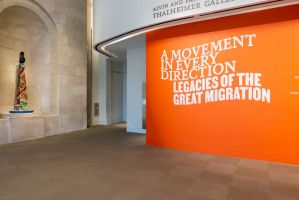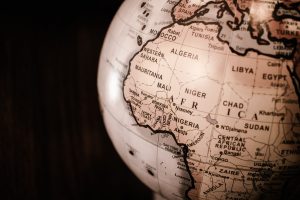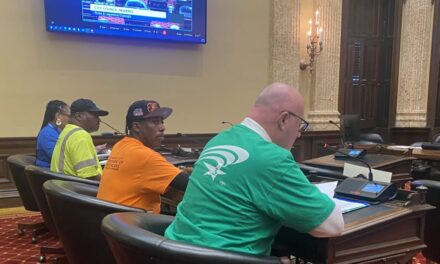By Beverly Richards,
Special to the AFRO
The Baltimore Museum of Art recently hosted a packed auditorium as journalist, author and the Pulitzer Prize-winner Isabel Wilkerson discussed her book, “The Warmth of Other Suns” and its impact.
The manuscript details the impetus and effects of the Great Migration, one of the largest mass relocations in American history. Six million African Americans fled the Jim Crow South from World War I until the 1970s, exiting to every corner of the U.S.
“This Great Migration was the only time in American history that American citizens had to flee the land of their birth just to be recognized as the citizens that they always have been. No other group of Americans has had to act like immigrants to be recognized as citizens,” said Wilkerson.
Written in the anthropological voice of a Zora Neale Hurston, Wilkerson skillfully weaves the exodus from the South from the perspective of Ida Mae Gladney, who in 1937 left sharecropping in Mississippi for Chicago; Robert Foster, who left Louisiana in 1953 to pursue a medical career; and George Starling, who fled Florida in 1945 for Harlem.
The North had an enormous labor shortage at the onset of the Great Migration and it needed laborers. “What did it do?” asked Wilkerson. “It looked for the cheapest labor in the land, which was African Americans in the South. And they jumped at the chance to be able to escape.”

This was a defection, a seeking of political asylum within the borders of one’s own country. And what they were defecting was a world and a hierarchy, what Wilkerson called “a caste system,” a rigid hierarchy of value attached to what one looked like in one’s assignment.
“That hierarchy was so ingrained and so arcane that it was against the law for a Black person and a White person to merely play checkers together In Birmingham,” said Wilkerson. “You could go to jail if you were caught playing checkers with a person of a different race.”
Wilkerson’s work has inspired an exhibit curated by Ryan N. Dennis and Jessica Bell Brown at the Baltimore Museum of Art. Titled, A Movement in Every Direction: Legacies of the Great Migration, the exhibition showcases the works of 12 artists “with personal connections to the Great Migration.”
Using various mediums, including wood, paper, photography, and film to make “the contemporary relevance of this historical movement.”
“The exhibition that we are celebrating is about migration, but it’s not what we think. It is about freedom and how far people are willing to go to achieve it. And I love the title because it speaks to the idea of a movement in every direction,” she said. “The goal of this kind of work, and of this exhibition, that we are now celebrating, is the idea that it focuses our attention on this phenomenon that was promulgated by human beings in a situation where they felt that they had no other choice.”
The exhibit, “A Movement in Every Direction Legacies of the Great Migration,” will be presented at the Baltimore Museum of Art from Oct. 30 to Jan. 29, 2023.
Help us Continue to tell OUR Story and join the AFRO family as a member –subscribers are now members! Join here!
The post Baltimore Museum of Art hosts new exhibit, A Movement in Every Direction: Legacies of the Great Migration appeared first on AFRO American Newspapers .











